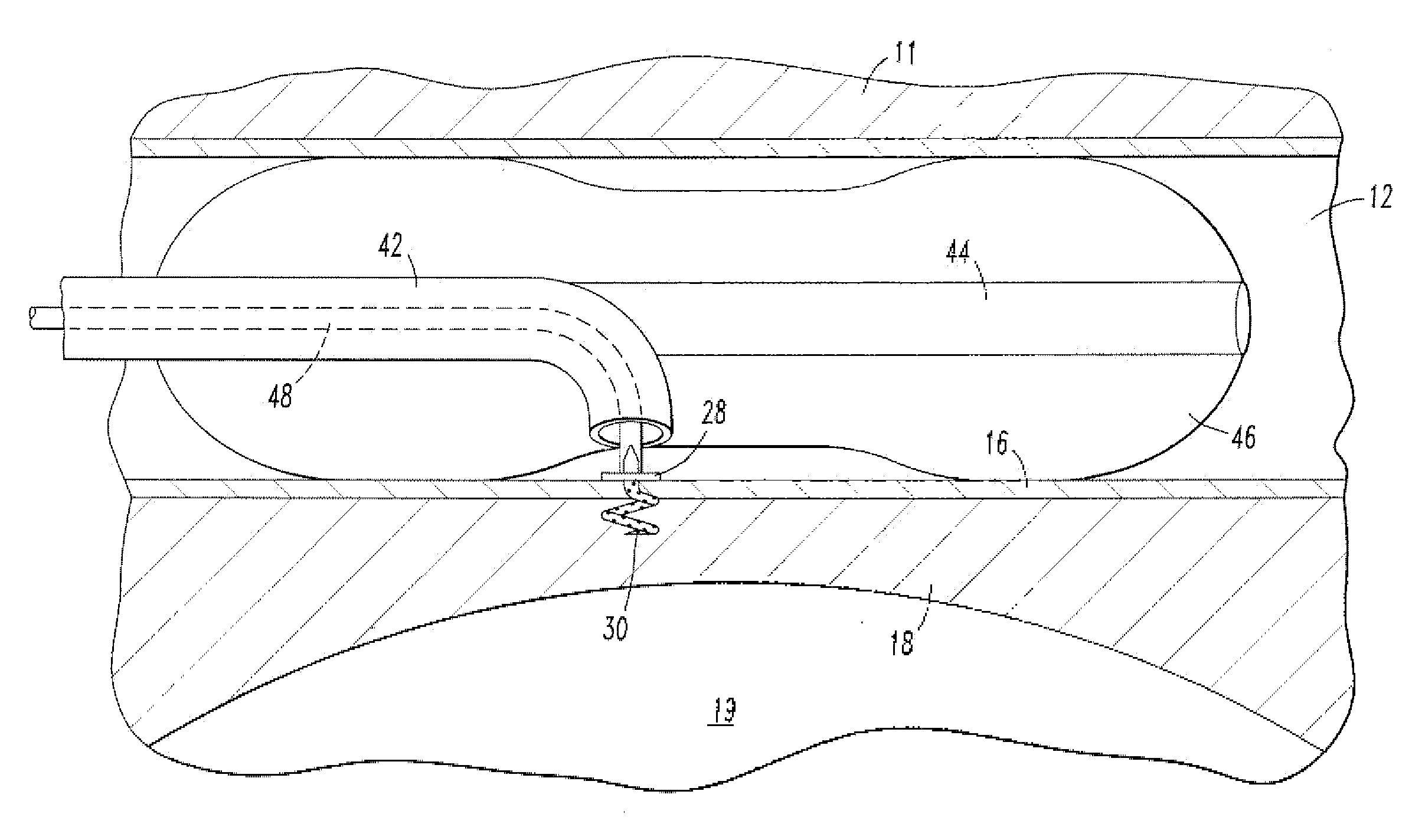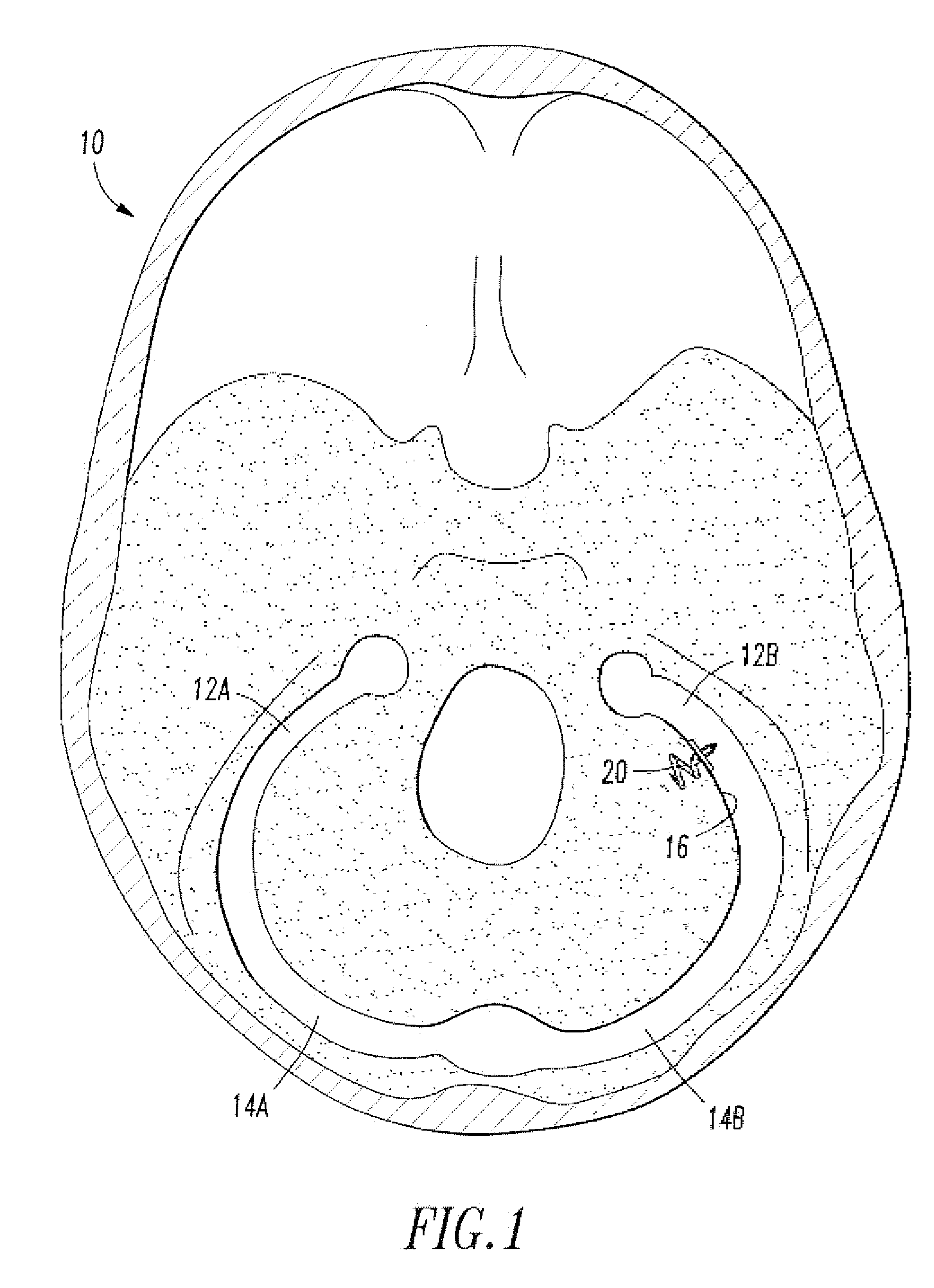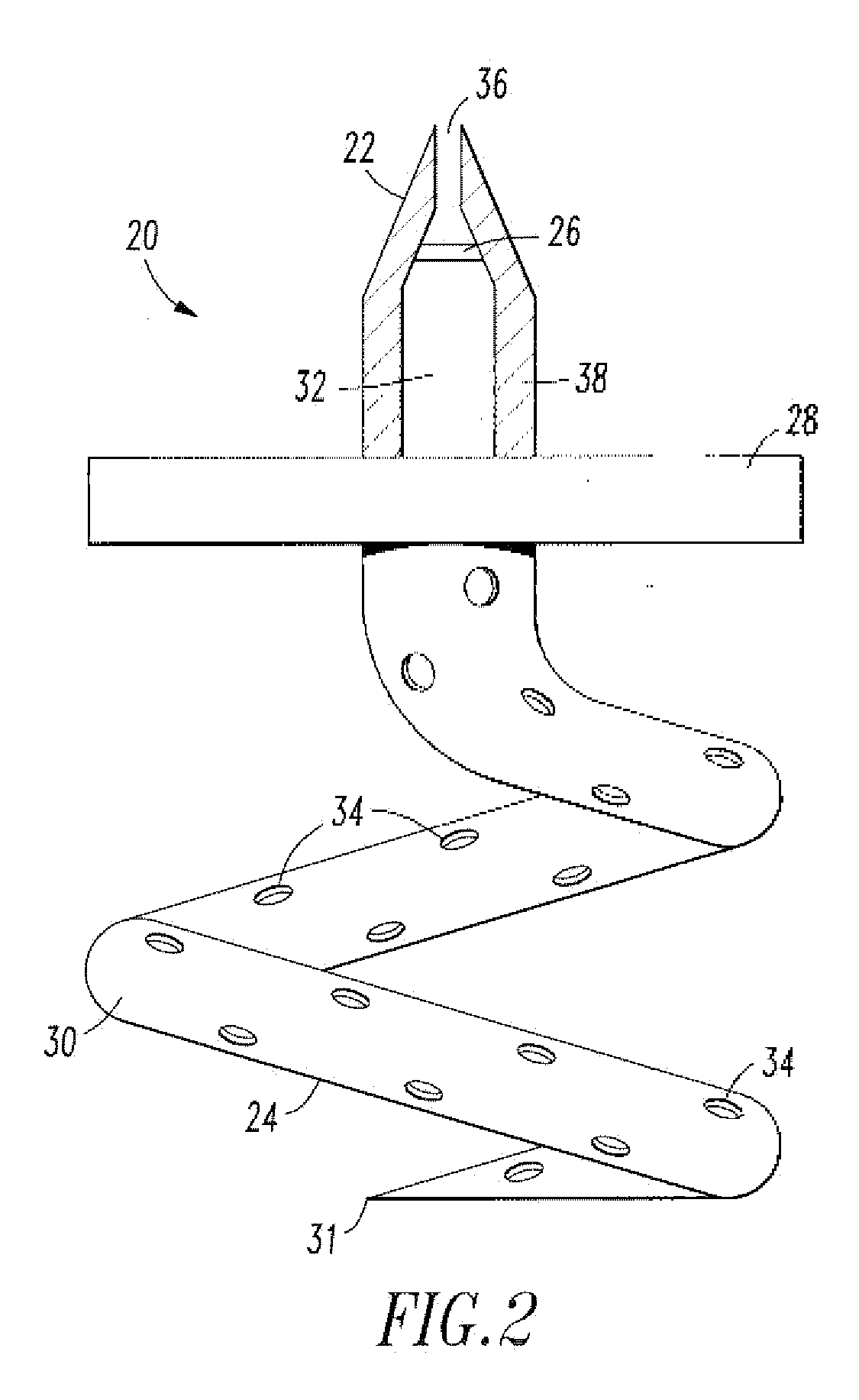Endovascular cerebrospinal fluid shunt
a cerebrospinal fluid and endovascular technology, applied in the field of endovascular shunts, can solve problems such as inability, and achieve the effect of more physiologic drainage of cerebrospinal fluid
- Summary
- Abstract
- Description
- Claims
- Application Information
AI Technical Summary
Benefits of technology
Problems solved by technology
Method used
Image
Examples
Embodiment Construction
[0020]Referring to FIG. 1, the endovascular shunt device of the present invention can be delivered to the right or left sigmoid sinus 12A, 12B of a patient's skull 10 via either the right or left jugular vein respectively of the venous system. The sigmoid sinus lumen 12 is located between the temporal bone (FIGS. 3-5) and the cerebellum.
[0021]A shunt 20 is implanted into a sigmoid sinus wall 16, so that one end communicates with CSF located in the cistern or CSF space 18 around the cerebellum 19. The device of the present invention uses the body's natural disease control mechanisms by delivering the CSF from cistern 18 into sigmoid sinus lumen 12 of the venous system. The venous system of the patient can be accesses either through the femoral or jugular veins (not shown) percutaneously. It should be appreciated that the shunt device of the present invention can be delivered to the sigmoid sinus via other locations.
[0022]As shown in FIG. 2, one embodiment of the endovascular CSF shun...
PUM
 Login to View More
Login to View More Abstract
Description
Claims
Application Information
 Login to View More
Login to View More - R&D
- Intellectual Property
- Life Sciences
- Materials
- Tech Scout
- Unparalleled Data Quality
- Higher Quality Content
- 60% Fewer Hallucinations
Browse by: Latest US Patents, China's latest patents, Technical Efficacy Thesaurus, Application Domain, Technology Topic, Popular Technical Reports.
© 2025 PatSnap. All rights reserved.Legal|Privacy policy|Modern Slavery Act Transparency Statement|Sitemap|About US| Contact US: help@patsnap.com



